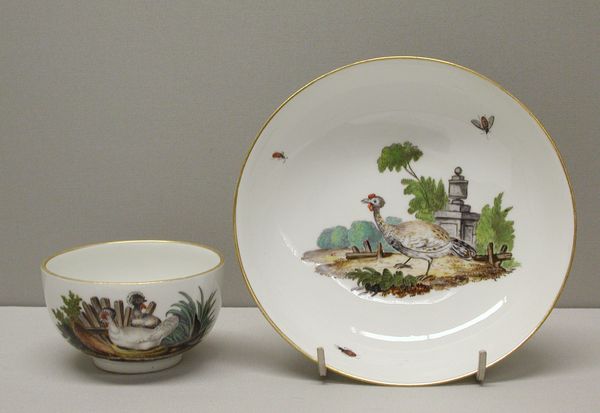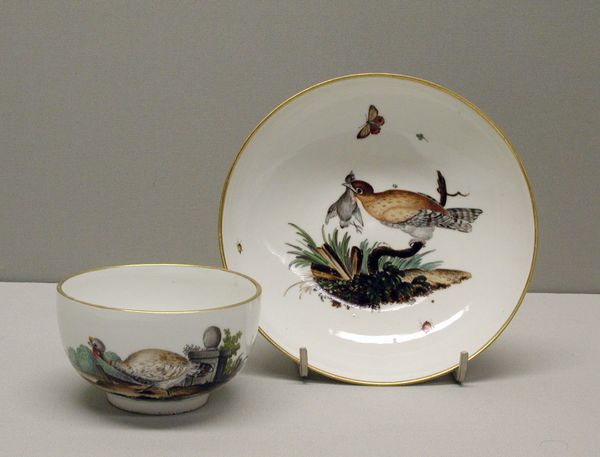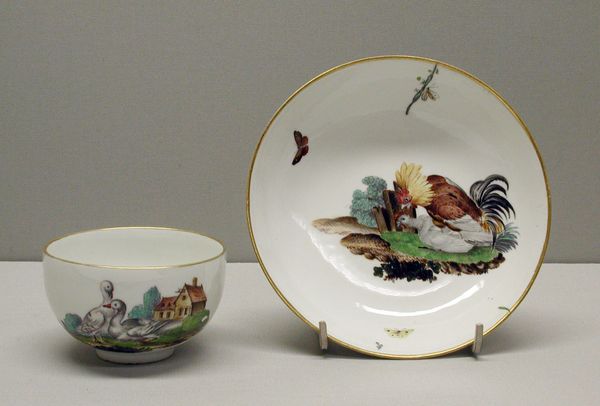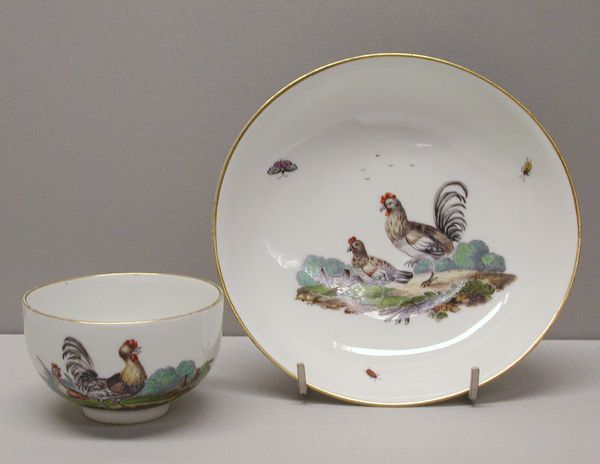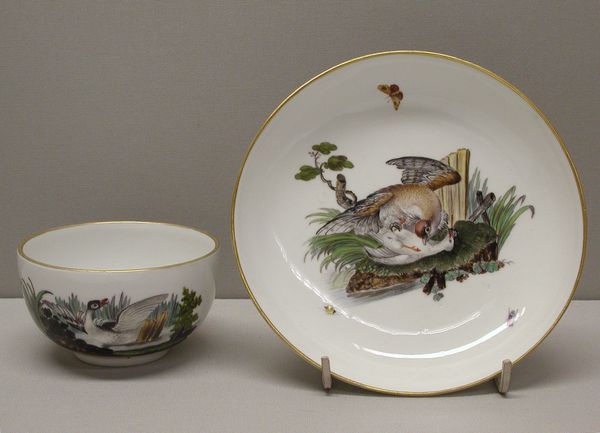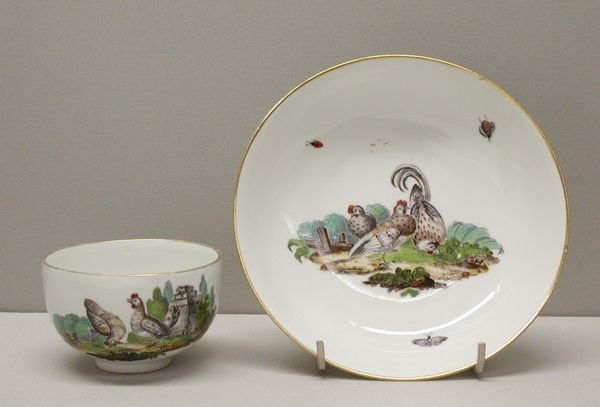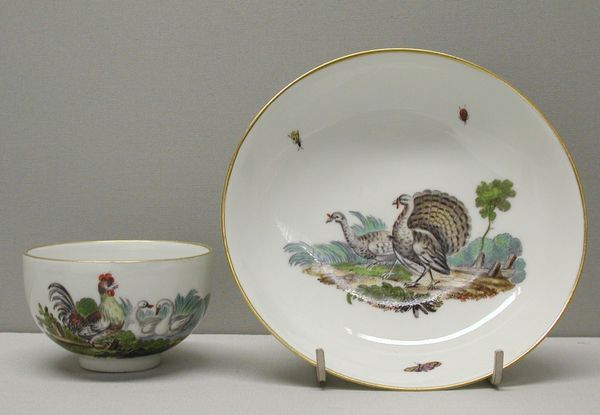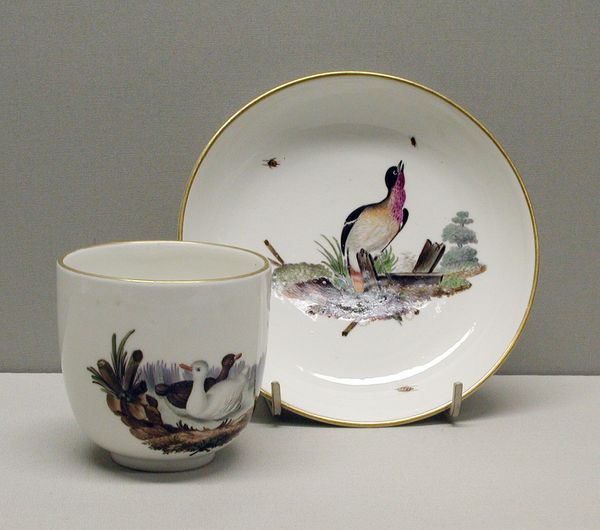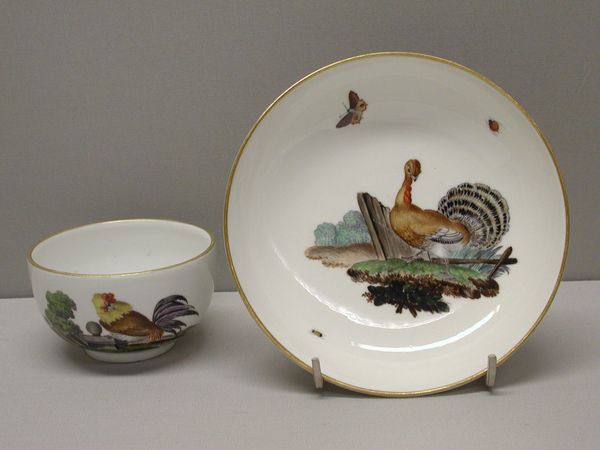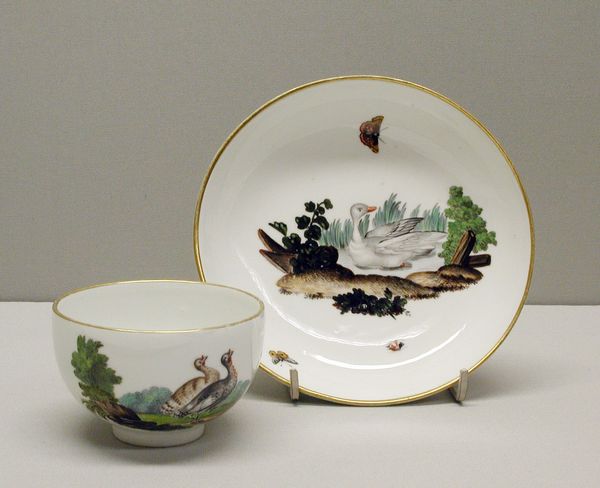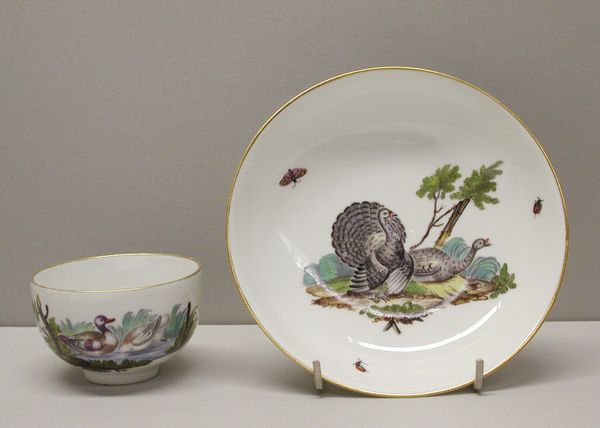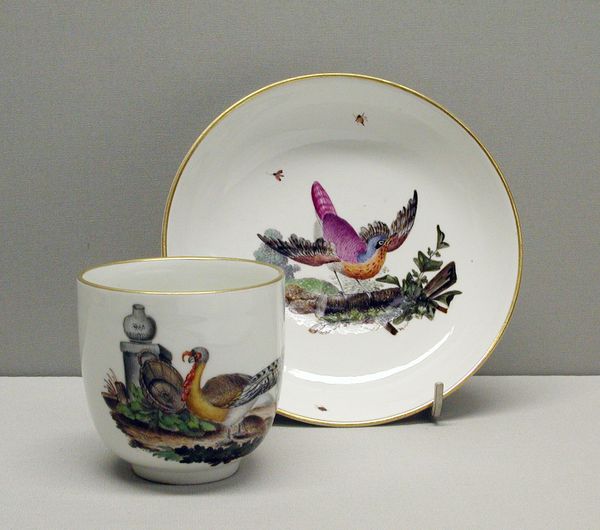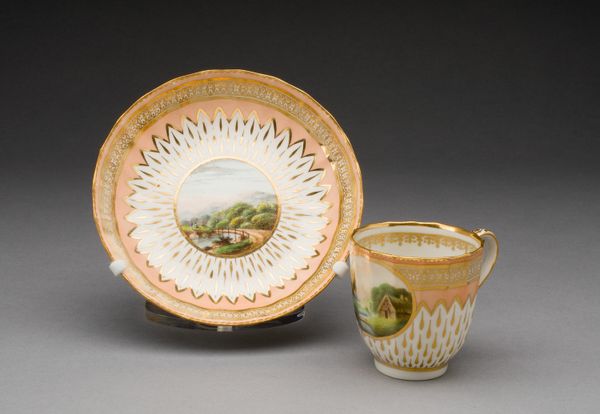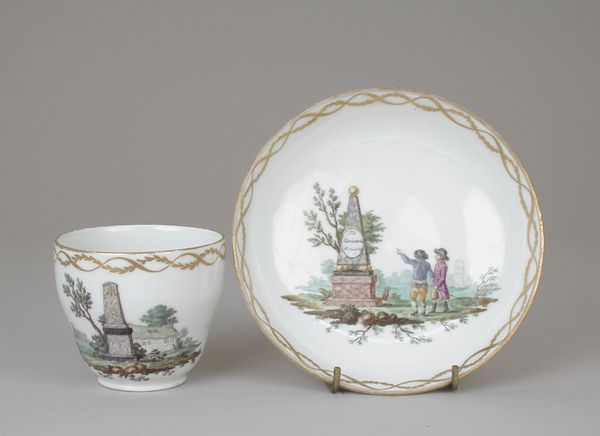
Dimensions: Diameter, saucer: 5 1/8 in. (13 cm) Overall, cup: 1 11/16 x 3 5/8 in. (4.3 x 9.2 cm)
Copyright: Public Domain
Editor: Here we have a "Teacup and Saucer" made between 1770 and 1780 by the Höchst Manufactory, currently residing in the Metropolitan Museum of Art. It’s made of porcelain and the painted scenes look quite charming. What strikes you when you look at this? Curator: Well, I'm immediately drawn to the materials and the manufacturing process itself. Porcelain was, and still is, a commodity often trading hands. In terms of production, Höchst was one of the earlier German factories attempting to capture the luxury porcelain market previously dominated by China and later Meissen. What labor practices went into this? Editor: So, it's less about the pretty birds and more about the… business of making it? Curator: Exactly! Consider the raw materials: kaolin clay, crucial for porcelain, was quite a commodity. Access determined who could even produce similar artworks and the location in Germany facilitated import and export. Think about the labor – from mining the clay to the skilled artisans painting those details. Who were they, and what were their working conditions? This isn't just decorative art; it's a product of complex social and economic forces. Even those 'charming' scenes, what's the consumption practice being celebrated? Editor: I never really thought about a teacup this way. How the manufacturing impacts design and subjects that artists select. Now it's harder to see this as just decorative, knowing all of this. Curator: Right? This isn't just a pretty object for consuming tea. It embodies the resources, labour, and economic systems of its time. Porcelain itself, initially prized for its durability and scarcity, had changed with the rising number of suppliers who could emulate Chinese methods. Editor: So the images here and gold trim could be displays of status? Curator: Precisely, they would be showing the commissioners’ power and economic class through their material possession, it serves as visual code. And you realize class hierarchies through an appreciation for their art and design elements. Editor: That's so interesting. Thanks for opening my eyes to it all! I’ll definitely be thinking differently about material culture now.
Comments
No comments
Be the first to comment and join the conversation on the ultimate creative platform.
